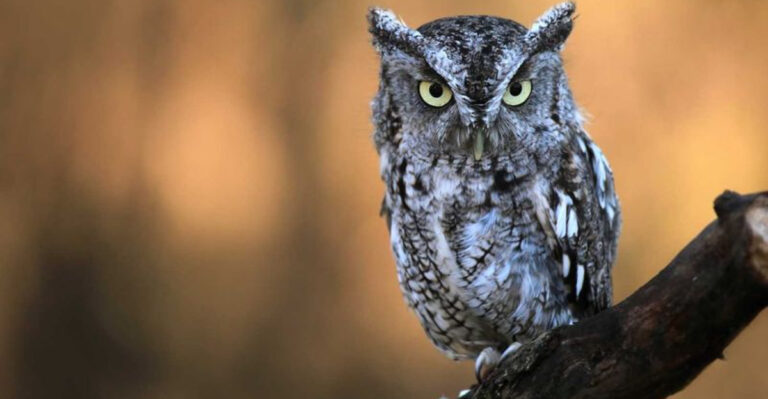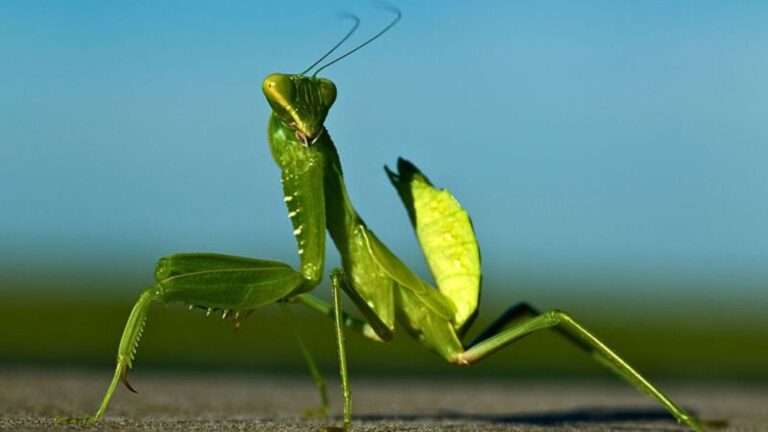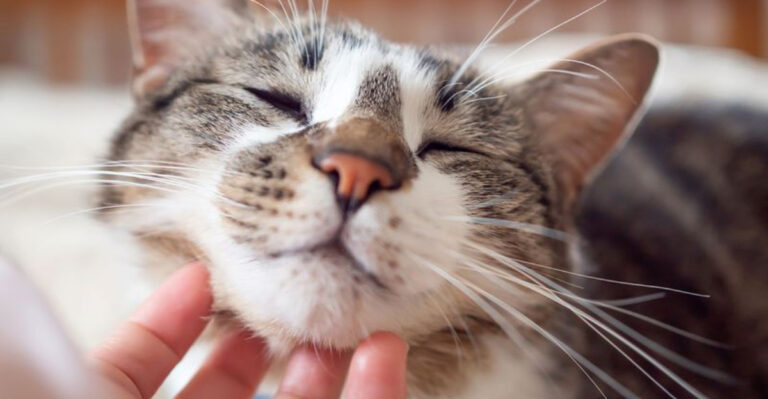10 Places You Should Never Hang A Hummingbird Feeder (And 5 Ideal Spots)

Hummingbirds bring magical moments to our gardens with their iridescent feathers and aerial acrobatics. But where you hang your feeder can make or break their dining experience.
Proper placement ensures these tiny visitors stay safe while giving you the best chance to enjoy their company. Let’s explore the dos and don’ts of hummingbird feeder placement.
1. Near Windows
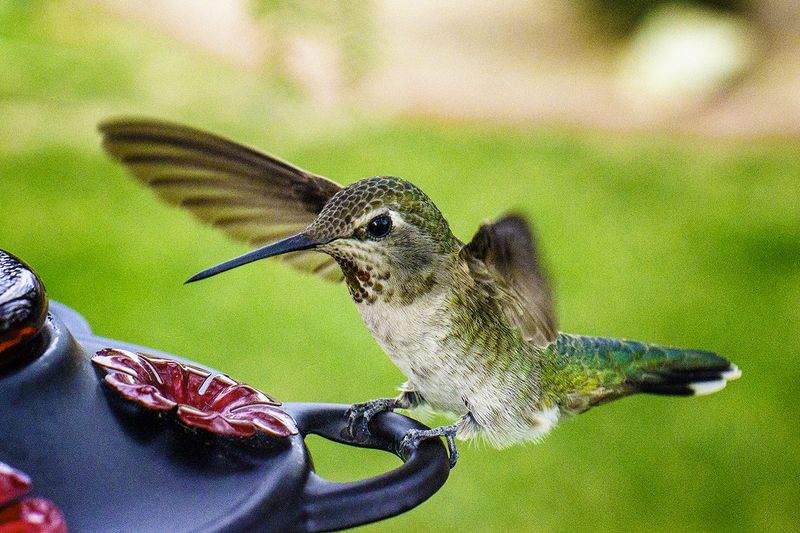
Hummingbirds can’t detect clear glass, making windows deadly obstacles. When feeders hang too close, these tiny flyers may crash at full speed—up to 30 mph!—causing injuries or death.
Keep feeders either within three feet of windows (too close to build up dangerous speed) or more than ten feet away (allowing time to change course).
2. Close To Predators’ Lairs
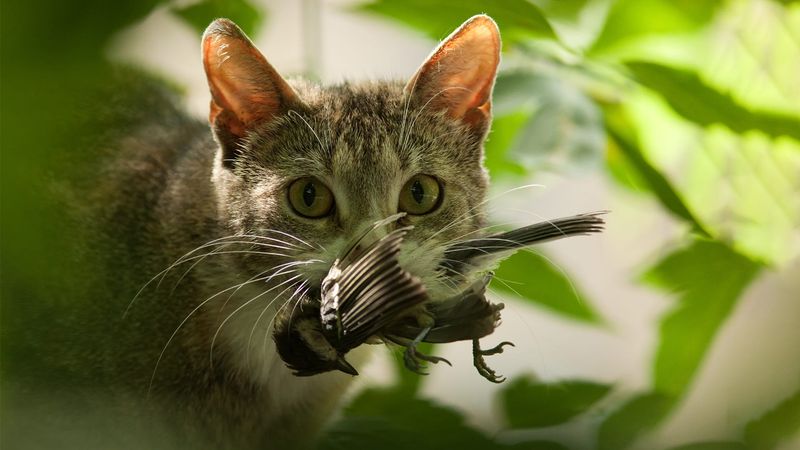
Cats view these jewel-toned birds as moving targets, while squirrels sabotage feeders for sweet nectar. Hanging feeders near shrubs where predators hide creates a deadly trap.
Hummingbirds need to feel secure while feeding, not constantly on alert. Their survival depends on your thoughtful placement away from areas where hunters lurk.
3. In Direct Sunlight
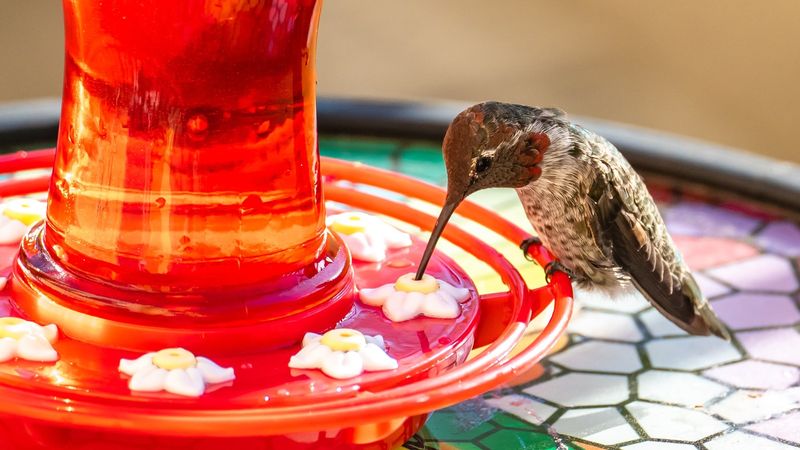
Sunshine transforms nectar into a bacteria breeding ground within hours! The sugar solution ferments quickly in heat, causing harmful mold growth that can sicken or kill these delicate creatures.
The red feeder parts already attract hummingbirds—no need for the deadly combination of hot plastic and spoiled sugar water. Choose partial shade to keep nectar fresh longer.
4. In High-Traffic Areas

Constantly slamming doors, children playing, or frequent foot traffic creates a stress zone for these naturally skittish birds. Hummingbirds prefer peaceful dining without interruptions or perceived threats.
They’ll abandon even the sweetest nectar source if they don’t feel safe. Choose quieter corners of your yard where human activity won’t startle them mid-meal.
5. Near Other Food Sources
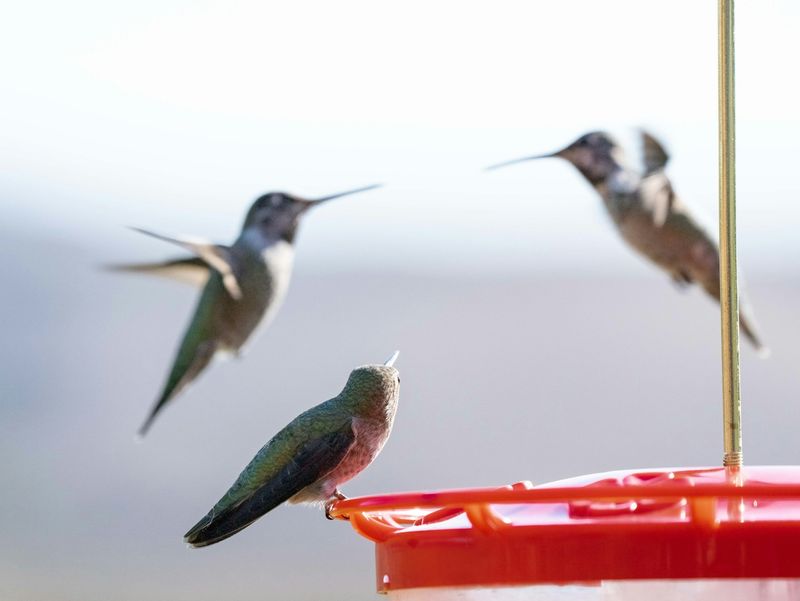
Territorial hummingbirds hate sharing! Placing feeders near seed stations invites larger birds that intimidate these tiny flyers. Aggressive species may monopolize the area, preventing hummingbirds from accessing food.
Competition creates stress during feeding times when they should be conserving energy. Keep hummingbird dining separate from other bird feeding stations.
6. In Areas With Strong Winds
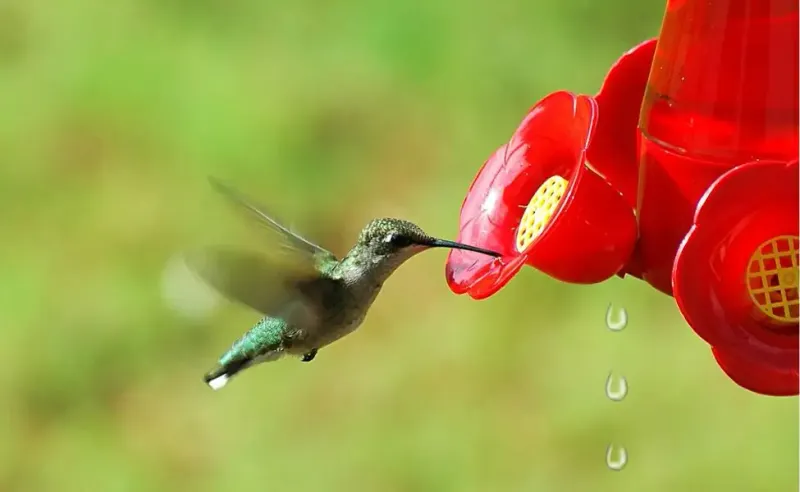
Windy spots turn feeders into swinging pendulums, spilling precious nectar and creating sticky messes. Hummingbirds struggle to hover and drink when feeders sway unpredictably.
Constant motion means wasted energy for birds that need every calorie. Choose sheltered locations like under eaves or near windbreaks where feeders remain stable and accessible even on breezy days.
7. Near Flowering Plants With Strong Scent
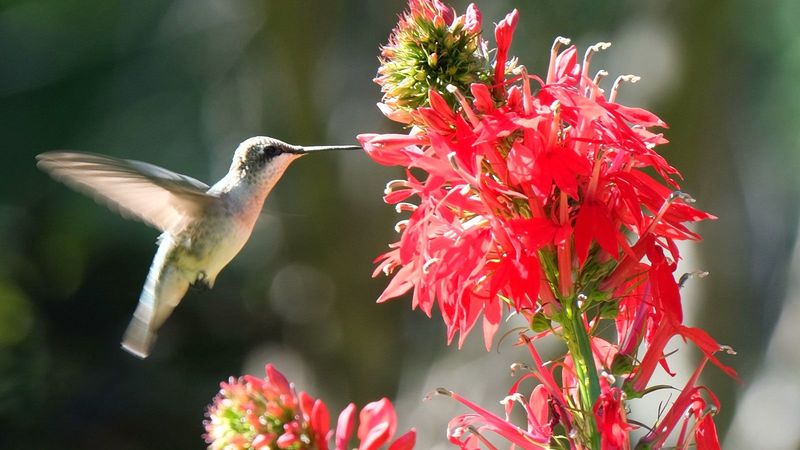
Powerfully fragrant blooms overwhelm the subtle scent of sugar water. Hummingbirds rely partly on smell to locate food sources, and competing aromas create confusion.
While it seems logical to place feeders near flowers, strongly scented varieties like jasmine or gardenia mask the nectar’s presence. Choose locations near visually attractive but less aromatic plants instead.
8. Close To Bright Artificial Lights

Porch lights create a double problem – attracting insects that contaminate nectar while making hummingbirds feel exposed to predators. These tiny birds prefer the protection of natural light patterns.
Night lighting disrupts their feeding schedule and exposes them when they’re most vulnerable. Position feeders where artificial illumination won’t interfere with their natural rhythms.
9. In Areas With Frequent Pesticide Use

Chemical treatments meant for pests kill the tiny insects hummingbirds rely on for protein. Pesticide residue can transfer to their feathers or contaminate nectar through airborne drift.
These toxins accumulate in their tiny bodies with devastating effects. Keep feeders far from gardens or lawns treated with chemicals, creating a safe zone free from harmful substances.
10. In The Middle Of A Busy Backyard With Pets
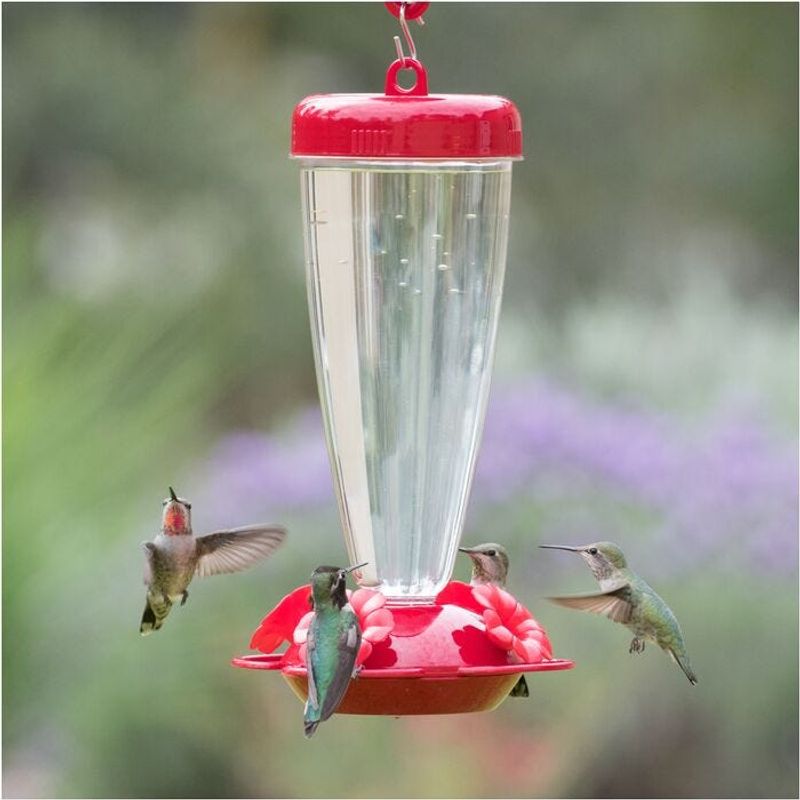
Even well-behaved dogs create unpredictable movements that frighten hummingbirds away from feeders. Their barking and jumping prevent these cautious birds from establishing comfortable feeding routines.
Hummingbirds need to feel secure enough to hover in place while drinking. Hang feeders in zones your pets don’t frequent, creating a sanctuary where birds can feed without constant disruption.
11. In A Quiet, Shady Spot
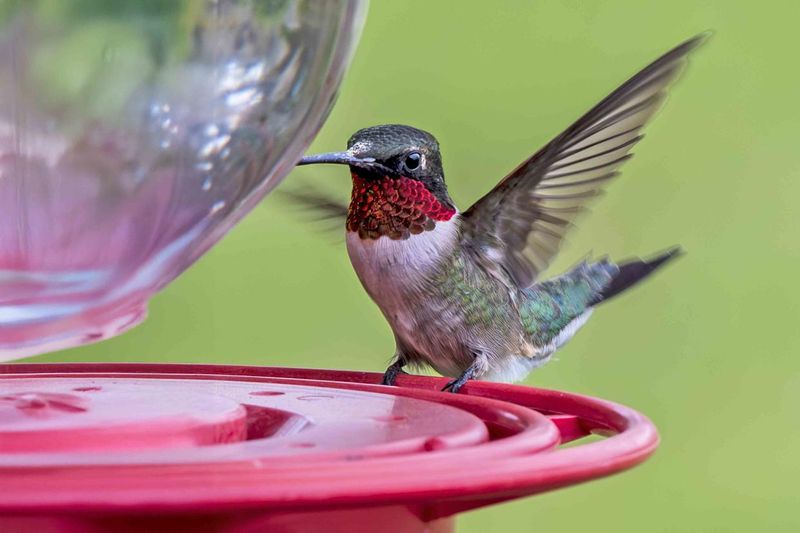
Dappled shade creates the perfect microclimate for hummingbird dining! Partial sunshine keeps nectar at the ideal temperature while preventing rapid fermentation. These metabolism marvels appreciate consistent temperatures.
A peaceful location away from household hustle gives them confidence to linger longer. Morning sun with afternoon shade offers the perfect balance for both nectar preservation and bird comfort.
12. Near Flowering Plants With Natural Nectar

Native flowering plants create a hummingbird paradise! Trumpet-shaped blooms like salvia, bee balm, and cardinal flower act as natural signposts leading birds to your feeder.
This companion planting mimics their natural habitat. Once attracted by familiar flowers, they’ll discover your feeder as a bonus food source, creating a complete habitat that supports their needs beyond sugar water.
13. Away From Windows And Obstacles
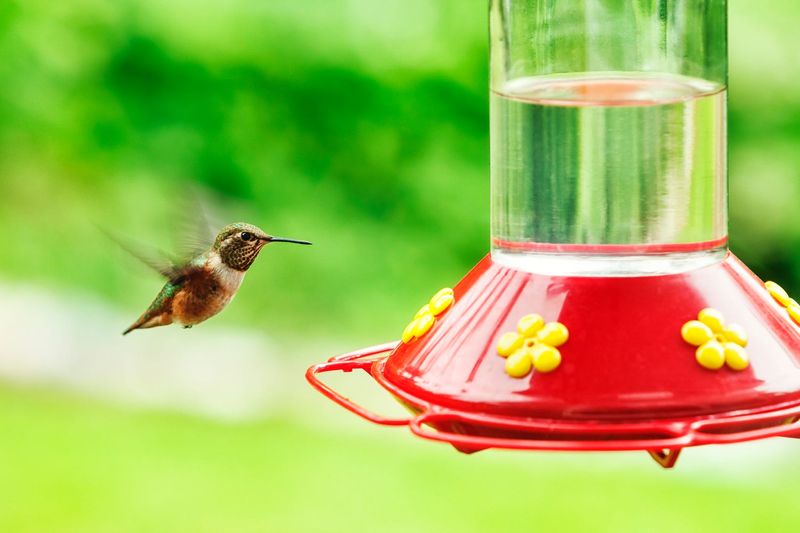
Open flight paths allow hummingbirds to approach and retreat safely from multiple angles. These aerial acrobats need room to maneuver their unique hovering and backward flight.
Clear space prevents collisions with branches, wires, or structures. Position feeders where birds have unobstructed access from several directions, creating a stress-free dining experience that encourages regular visits.
14. In A Spot Where You Can Easily Observe Them
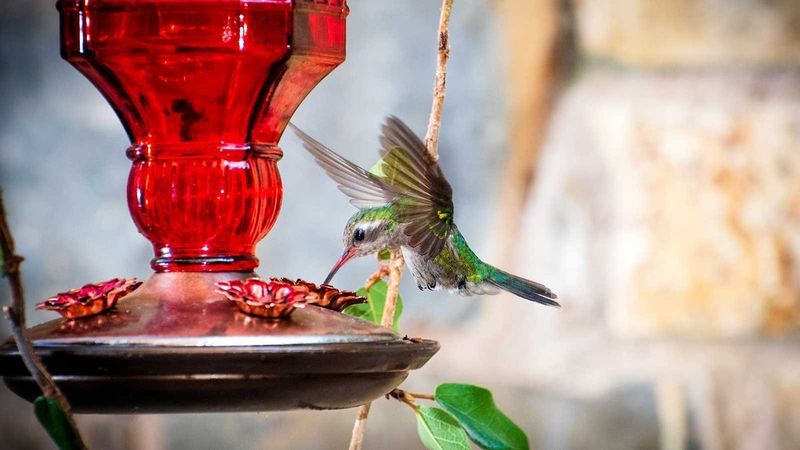
Strategic placement rewards you with front-row views of these flying jewels! Consider sightlines from your favorite indoor spots—kitchen windows, living room, or home office.
Watch their fascinating behaviors while staying far enough away not to disturb them. The joy of hummingbird watching comes from witnessing their natural activities without them knowing you’re there.
15. On A Hanging Hook Or Pole To Prevent Squirrel Access
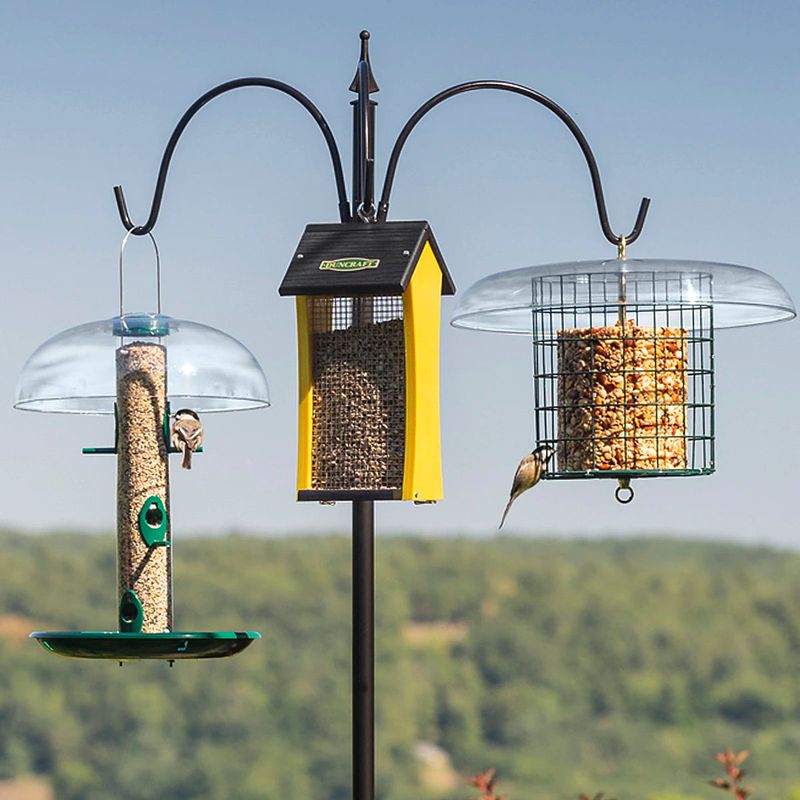
Squirrel-proofing saves nectar and prevents damage! Specialized shepherd’s hooks or poles with squirrel baffles create perfect hanging spots beyond the reach of climbing critters.
These strategic mounts keep feeders away from jumping points like branches or railings. Height matters—aim for 5-6 feet above ground, making it accessible for hummingbirds while deterring four-legged sugar thieves.


